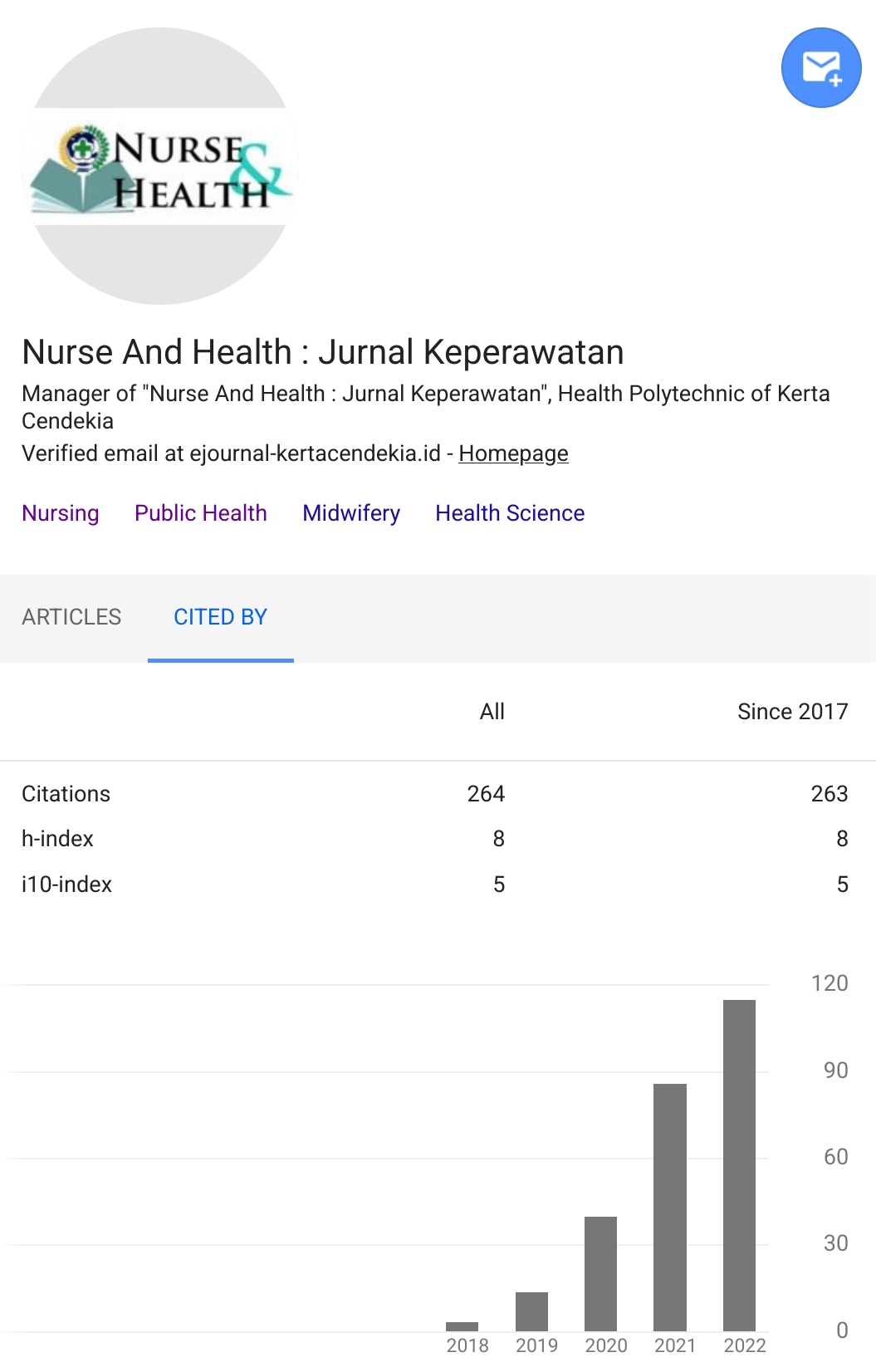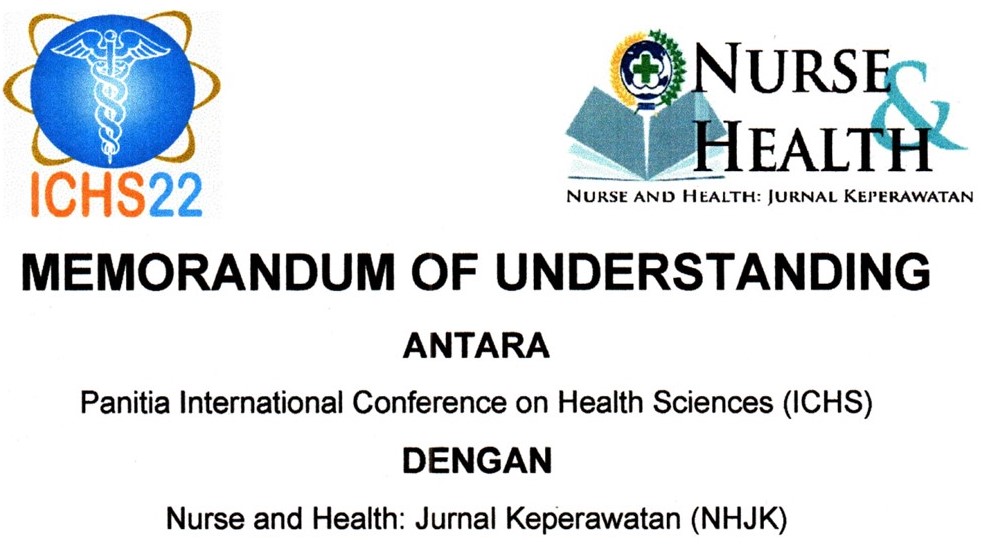ANALYSIS OF FACTORS INFLUENCING THE IMPLEMENTATION OF NURSING SUPERVISION BY THE HEAD OF THE ROOM: A SCOPING REVIEW
Abstract
Background: Supervision in several hospitals until now is still not optimal by the head of the room so that the direction function in nursing management does not run optimally which affects the quality of nursing care. This study aims to find factors that influence the implementation of supervision by the head of the room. Objective: This research uses the Scoping review method Data Sources: In the search using data sources from Google Scholar, Scient Direct and Pubmed. The search uses the keywords "nursing supervision" AND "faktors" AND "nurse management". Articles are filtered from the years "2018-2024", "free full text". Of all the articles found, there are 8 articles obtained for analysis. Review Methods: The review method uses a Scoping Review using the PRISMA diagram, and synthesis is carried out by removing the exclusion criteria. Results : The results of the study showed that from the 8 articles obtained, there were 4 factors that influenced trust and good relationships, supervisor workload, shared understanding of the implementation of supervision and supervisor competence. Conclusion: The results show that the supervision by the head of the room is less than optimal due to these factors. So it can be a recommendation for hospital institutions to make efforts to improve the nursing management function, especially the direction function in the form of supervision.Downloads
References
Aluwihare-Samaranayake, D., Ogilvie, L., Cummings, G., & Gellatly, I. (2017). The nursing profession in Sri Lanka: time for policy changes. Int. Nursing Rev, 64, 363–370. DOI: https://doi.org/10.1111/inr.12398
Atakro, CA, Armah, E., Menlah, A., Garti, I., Addo, SB, Adatara, P., & Boni, GS (2019). Clinical Placement Experiences by undergraduate nursing students in selected teaching hospitals in Ghana. BMC Nurs, 18, 1–10. DOI: https://doi.org/10.1186/s12912-018-0325-8
Babo, R., & Syamsuddin, A. (2022). Clinical Supervision Model to Improve the Quality of Learning in Elementary School. Elementary School Scientific Journal, 6(1), 85–94. DOI: https://doi.org/10.23887/jisd.v6i1.41303
Bustami, B., Khairuddin, K., & Usman, N. (2022). Implementation of Clinical Supervision in Improving the Ability of Teachers in Islamic Religious Education Learning. AL-ISHLAH: Journal of Education, 14(4), 7339–7344. DOI: https://doi.org/10.35445/alishlah.v14i4.2329
Farida, S., Jamilah, F., & Ruqoyyah. (2020). The Influence of Supervisor Competence and Academic Supervision on Teacher Performance at MI Nurul Hidayah Jrengik Sampang in the 2018/2019 Academic Year. Journal of Islamic Management and Education, 07(01), 29–49. http://ejournal.stainim.ac.id/index.php/edusiana
Hadi, M., Turyatiningsih, TT, Arofiati, F., Efendi, F., & Nursalam. (2020). Nursing Supervision Model Toward Patient Safety Goals on the Ward. Journal of Global Pharma Technology, 12(1), 287–292.
Hill, E., & Abhayasinghe, K. (2022). Factors which influence the effectiveness of clinical supervision for student nurses in Sri Lanka: A qualitative research study. Nurse Education Today, 114. https://doi.org/10.1016/j.nedt.2022.105387 DOI: https://doi.org/10.1016/j.nedt.2022.105387
Hoskin, J. (2021). Clinical supervision of physician associates (PAs) in primary care: who, what and how is it done? 8(1), 57–61. DOI: https://doi.org/10.7861/fhj.2020-0241
Howard, V., & Eddy-Imishue, G. ere K. (2020). Factors influencing adequate and effective clinical supervision for inpatient mental health nurses' personal and professional development: An integrative review. In Journal of Psychiatric and Mental Health Nursing (Vol. 27, Issue 5, pp. 640–656). Blackwell Publishing Ltd. https://doi.org/10.1111/jpm.12604 DOI: https://doi.org/10.1111/jpm.12604
Kisthinios, M., & Carlson, E. (2019). The content of meta-supervision in a nursing educational context. Nursing Open, 6, 401–407. DOI: https://doi.org/10.1002/nop2.220
Lekalakal-Mokgele, E., & Caka, E.M. (2015). Facilitative and obstructive factors in the clinical learning environment: experiences of pupil enrolled nurses. Curationis 38, 31(1). DOI: https://doi.org/10.4102/curationis.v38i1.1263
Mahasneh, D., Shoqirat, N., Al Hadid, L., Alja'afreh, M.A., & Shosha, GMA (2020). Nursing students' experience of clinical supervision and contributing factors in Jordan. Nurse Education Today, 92. https://doi.org/10.1016/j.nedt.2020.104515 DOI: https://doi.org/10.1016/j.nedt.2020.104515
Marquis, B. L., & Huston, C. J. (2017). Marquis Leadership Roles and Management Functions in Nursing Theory and Application (Christina C. Burn, Ed.; 9th ed., Vol. 9). Wolter Kluwer Health.
Millington, P. M., Snaith, B., Edwards, L., & Carus, C. A. (2024). Factors that influence the quality of the clinical supervision experience in a first contact physiotherapy (FCP) role - The perspectives of supervisors and supervisees – A qualitative analysis. Musculoskeletal Science and Practice, 70. https://doi.org/10.1016/j.msksp.2024.102921 DOI: https://doi.org/10.1016/j.msksp.2024.102921
Mohamed, F.R., & Mohamed Ahmed, H. (2019). Clinical supervision factors as perceived by the nursing staff. Journal of Nursing Education and Practice, 9(6), 67. https://doi.org/10.5430/jnep.v9n6p67 DOI: https://doi.org/10.5430/jnep.v9n6p67
Nuritasari, RT, Rofiqi, E., Fibriola, TN, & Ardiansyah, RT (2019). The effect of clinical supervision on nurse performance. Jurnal Ners, 14(3 Special Issue), 161–164. https://doi.org/10.20473/jn.v14i3(si).16956 DOI: https://doi.org/10.20473/jn.v14i3.16956
Pohl S, & Galletta M. (2017). The role of supervisor emotional support on individual job satisfaction: a multilevel analysis. Appl Nurs Res, 33, 6–61. DOI: https://doi.org/10.1016/j.apnr.2016.10.004
Puspa Sari, D., Akmalina, R., & Saputera, B. (2020). Effectiveness Analysis of Clinical Supervision Models in Improving the Clinical Nurse Performance. International Conference of Business and Social Sciences.
Rothwell, C., Kehoe, A., Farook, S. F., & Illing, J. (2021). Enablers and barriers to effective clinical supervision in the workplace: A rapid evidence review. BMJ Open, 11(9), 1–10. DOI: https://doi.org/10.1136/bmjopen-2021-052929
Sellers, E., Craven-Staines, S., & Vaughan, C. (2024). Clinical supervision effectiveness in NHS nursing, medical and allied health professionals: Exploring interaction with workplace factors, supervision factors and burnout. Journal of Evaluation in Clinical Practice. https://doi.org/10.1111/jep.14149 DOI: https://doi.org/10.1111/jep.14149
Supratman, & sudaryanto. (2008). Clinical nursing supervision model for nursing science (Vol. 4). ISSN 1979697.
Titik, S. (2021). Analysis of Factors Influencing Nurses' Perceptions of Supervision Implementation. Muhammadiyah Nursing Journal, 6(4), 216–221.
Wardhani, NI, Prestiadi, D., & Imron, A. (2021). Implementation of Clinical Supervision to Improve Teacher Professionalism in Learning. International Conference on Continuing Education and Technology, 17–20.
Westphaln, K.K., Regoeczi, W., Masotya, M., Vazquez-Westphaln, B., Lounsbury, K., McDavid, L., Lee, H.N., Johnson, J., & Ronis, S.D. (2021). From Arksey and O'Malley and Beyond: Customizations to Enhance A Team-Based, Mixed Approach to Scoping Review Methodology. MethodsX, 8. DOI: https://doi.org/10.1016/j.mex.2021.101375
Copyright (c) 2025 Endang Nilaprapti, Lidia Hastuti, Wida Kuswida Bhakti

This work is licensed under a Creative Commons Attribution-NonCommercial 4.0 International License.
Authors who publish with Nurse and Health: Jurnal Keperawatan agree to the following terms:
- Authors retain copyright licensed under a Creative Commons Attribution-NonCommercial 4.0 (CC BY-NC 4.0), which allows others to remix, tweak, and build upon the authors' work non-commercially, and although the others' new works must also acknowledge the authors and be non-commercial, they don't have to license their derivative works on the same terms.
- Authors are permitted and encouraged to post their work online (e.g., in institutional repositories or on their website) prior to and during the submission process, as it can lead to productive exchanges, as well as earlier and greater citation of published work (See The Effect of Open Access). Authors can archive pre-print and post-print or publisher's version/PDF.






















